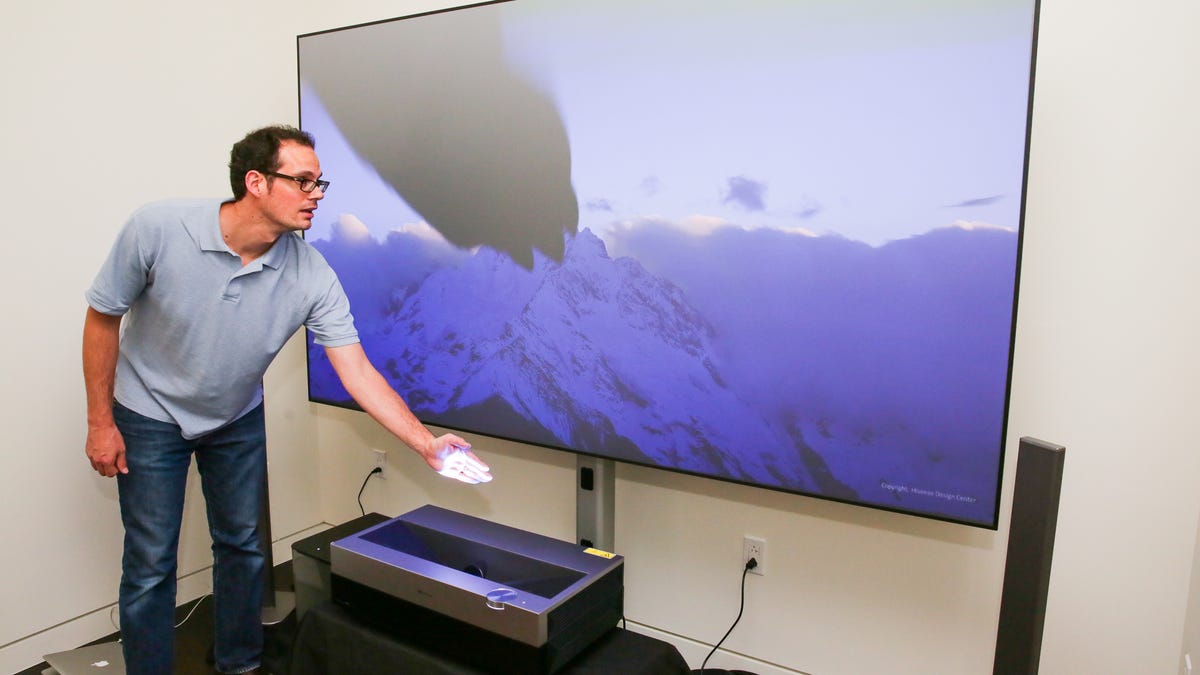Do Hisense TVs make high-end sense?
Chinese TV maker Hisense is entering the US market in force with a bunch of new televisions. They boast larger screen sizes, better technologies and higher prices than previous efforts. Can they compete?

Brand name is an important factor in TV choice. Just ask Vizio, whose TVs are routinely pooh-poohed by some buyers compared to the Samsungs and Sonys of the world, despite superior image quality.
Now Chinese TV maker Hisense takes a page from Vizio's playbook. Its latest lineup of sets expands beyond budget offerings -- think cheap Roku TVs and smaller 4K models -- to include bigger screens (up to 86 inches) and better tech (local dimming and quantum dots).
Along with all of that comes higher prices, including a few models with real upscale aspirations. Here's the lineup.
H8 series: The 50- and 55-inch versions offer 4K resolution and HDR compatibility at prices that undercut our current favorite, Vizio's M series. The newer large sizes, up to 86 inches, do the same thing, and that size and the 70 incher offer the same core technology, full-array local dimming, that we like so much on the M and other high-performance LCDs. The 65- and 75-inch sizes also claim a wide color gamut that hits 83 percent of DCI, higher than what we measured on the Vizio M.
The new sizes (65-inch and up) include 4K and HDR streaming from Netflix and YouTube, although the latter hasn't added HDR content yet. They use a newly redesigned onscreen interface, likely an improvement over Vizio's inconvenient Google Cast system.
Hisense higher-end TV lineup
| Model | Size | Price | Available | Key feature |
|---|---|---|---|---|
| 50H8C | 50 inches | $475 | Now | 4K with HDR |
| 55H8C | 55 inches | $600 | Now | 4K with HDR |
| 65H8C | 65 inches | $1,000 | early 2017 | edge-lit local dimming |
| 70H8D | 70 inches | $2,500 | December | full-array local dimming |
| 75H8C | 75 inches | $3,000 | December | edge-lit local dimming |
| 86H8D | 86 inches | $6,000 | early 2017 | full-array local dimming |
| 65H9D | 65 inches | $1,700 | early 2017 | edge-lit local dimming |
| 70H10D | 70 inches | $3,500 | early 2017 | quantum dot, THX |
| H9900 | 100 inches | $13,000 | summer 2017 | 4K laser projector |
H9 and H10: You may remember the original "ULED" models shown last year and at CES. Their successors include a 65-inch size that has very similar specifications to the H8 and a 70-inch model that's the best-equipped of the bunch--with a sky-high price to match. It has quantum dot for improved color and a full-array local dimming backlight with 320 zones, a higher claim than any TV aside from the Vizio reference series (the Sony Z9D might have more, but Sony isn't talking).
H9900 Laser TV: This "100-inch TV" is actually a floor-mounted, short-throw projector that includes a screen and a surround-sound system. It has HDR support and 4K resolution, although at 2,800 lumens it doesn't come anywhere near the light output of an actual TV. The laser light engine means never having to replace a bulb, and of course being able to brag about lasers.
We plan to review some of these models as they become available, but in the meantime it's good to see a TV maker, even one without much name recognition in the US, deliver local dimming at lower price points.

